No products in the cart.
Blog, oca (Oxalis tuberosa)
Oca: Odds and ends
The oca flowering season came to an end this week. All of the plants are still growing strong, but they dropped the last of their flowers. That seems like another bit of evidence that oca have a limited flowering period that is not necessarily related to weather.
The weather, other than the wind, which is always a hazard at this time of year, has been very cooperative. Long term forecasts aren’t showing temperatures low enough to frost in the next couple of weeks, so it looks like we are going to have time enough for all of the oca to reach full size.
Unfortunately, we’re taking some damage from rodents, but I guess we have enough to share.
Growth progress
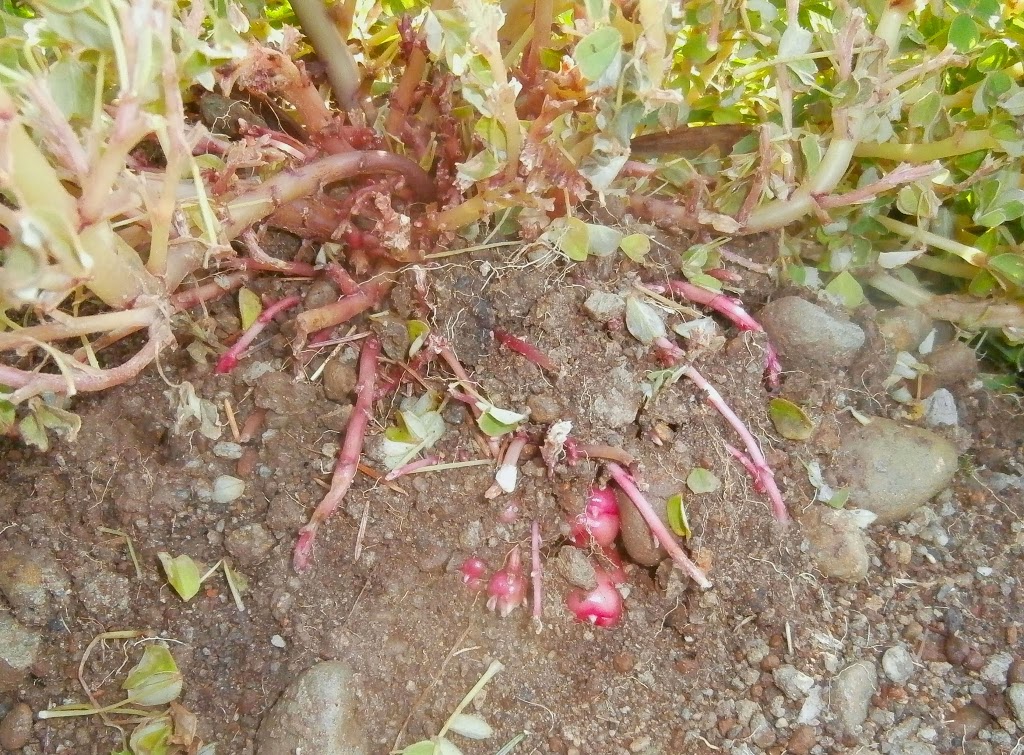 |
| Tuber growth is coming on strong. We have ocas busting out of the ground all over the place. |
Test pulls are looking good:
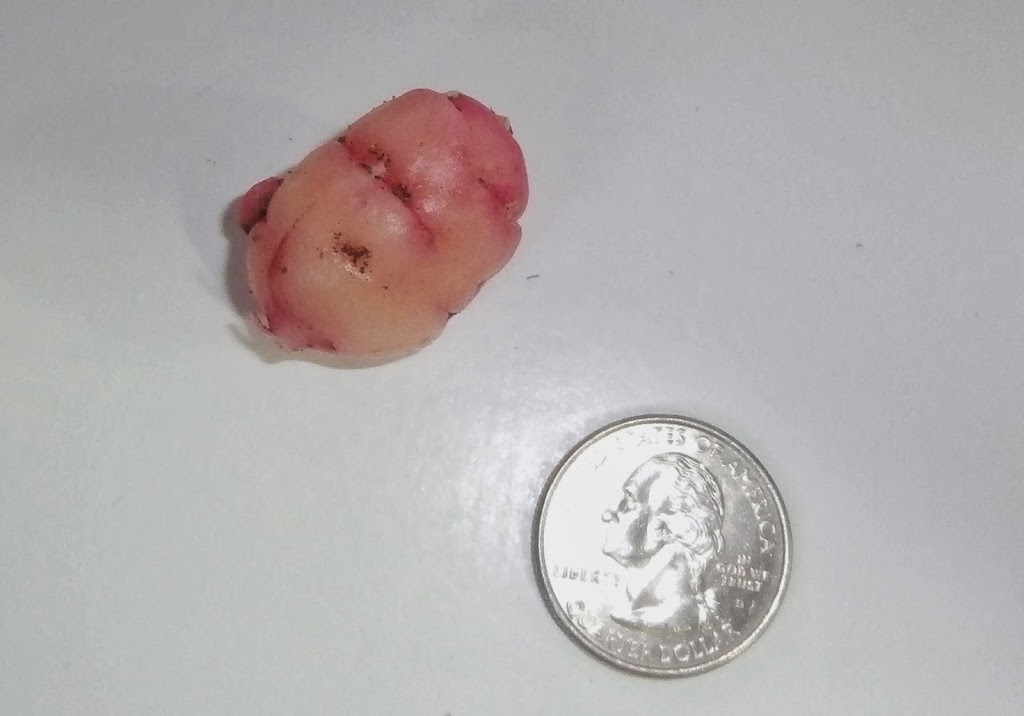 |
| I was a little worried that I took too many small cuttings from Blush, but while the tubers won’t win any records for size, there are plenty of them, |
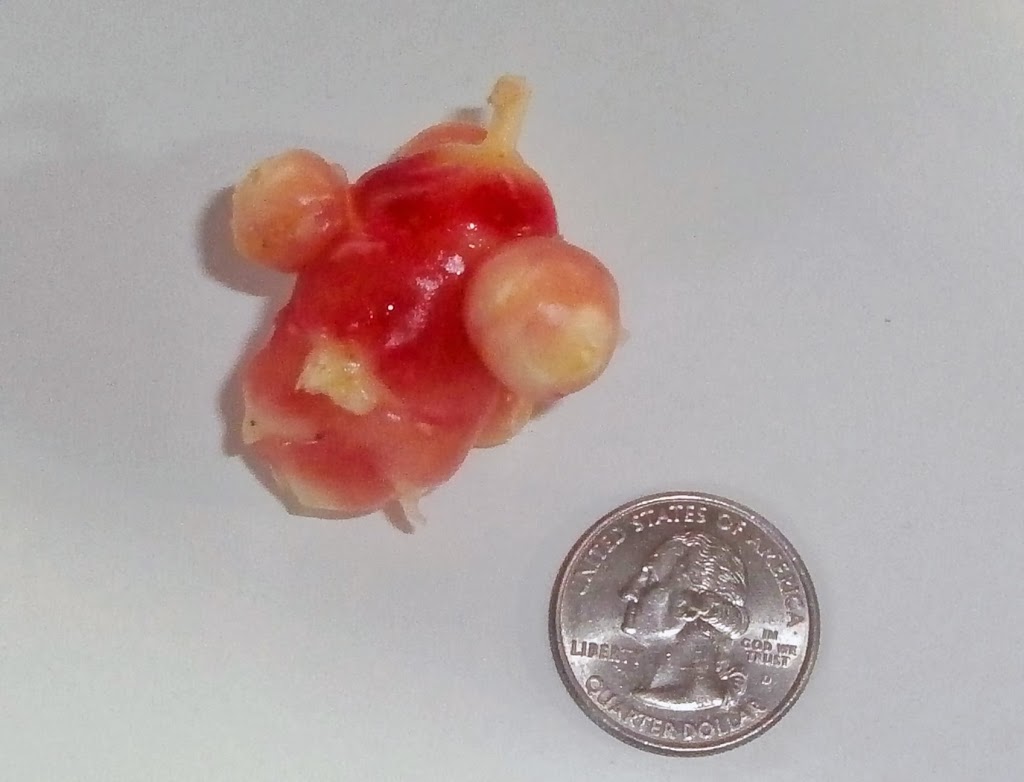 |
| Mexican Red is forming a lot of nodules this year, which is not normal for this variety. |
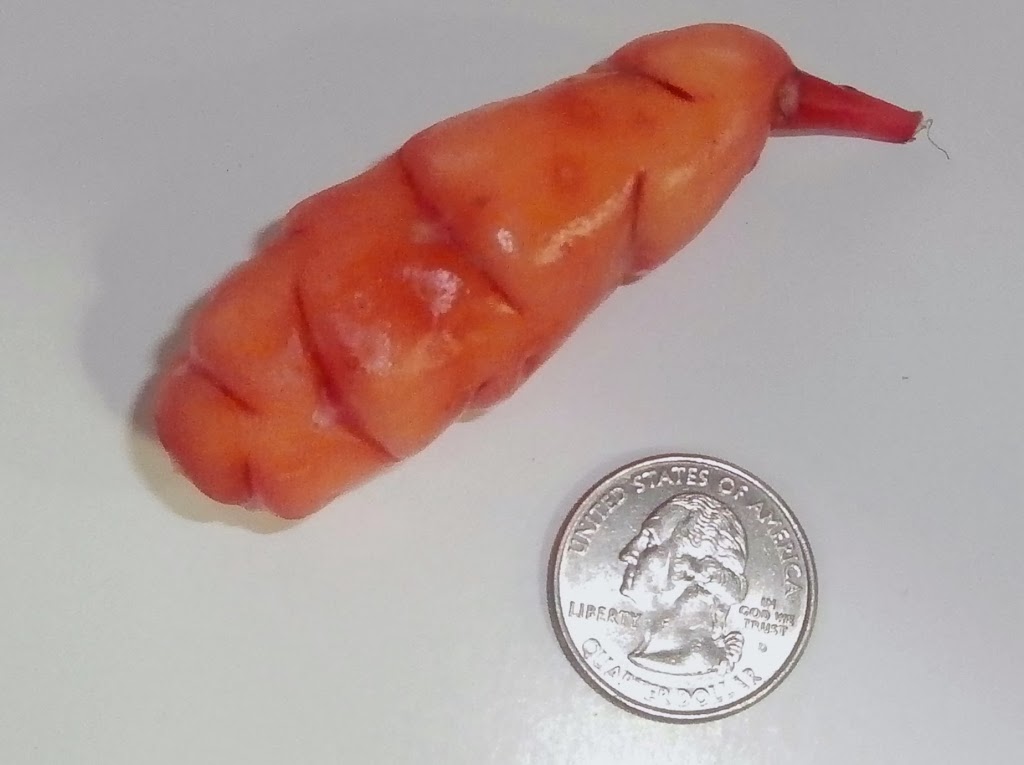 |
| Sunset, as always, is one of the earliest to size up. One of the best varieties for this climate. |
Disease
A few plants are suffering from a stem rot that, for lack of an official name, I call Oca Blackleg (after the potato disease of the same name). It is probably a bacterial or fungal disease. It doesn’t usually affect all of the stems on a plant.
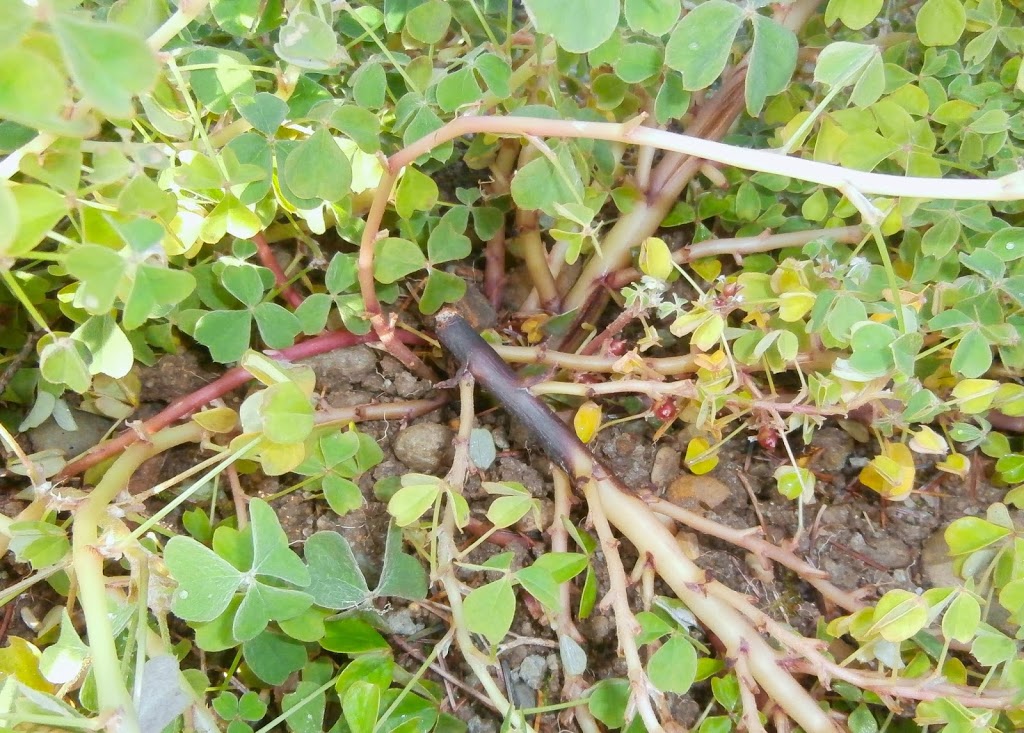 |
| It starts with a blacked stem base. Sometimes it stops there and the stem survives. |
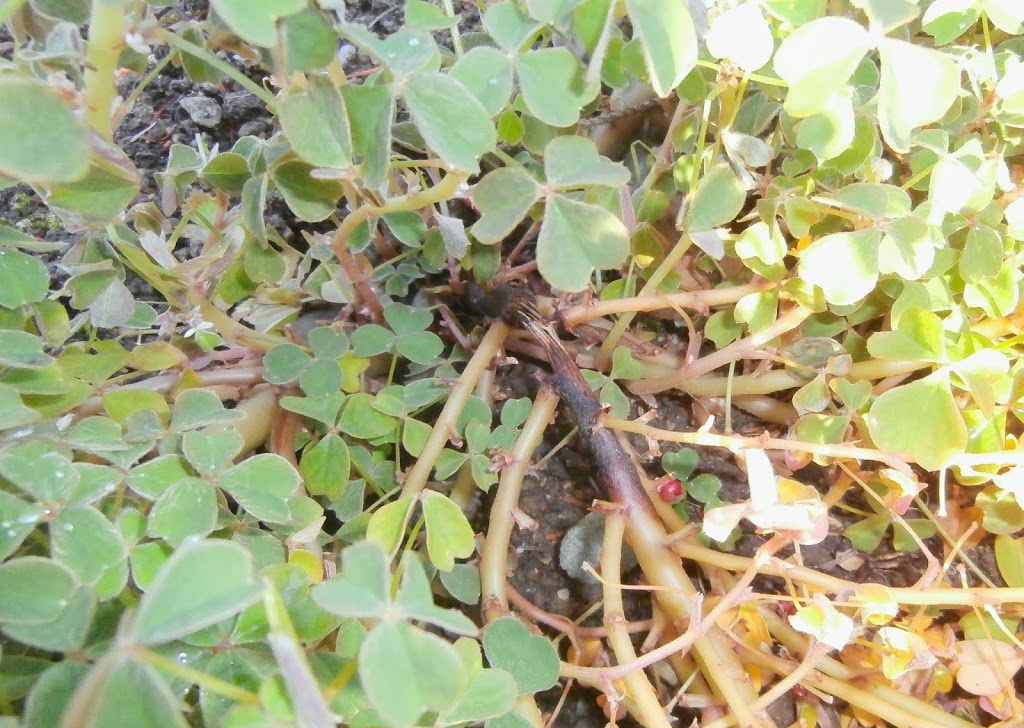 |
| In other cases, the stem rots through. Even then, the separated stem often re-roots itself. Oca is a tough plant to kill. |
Oca Blackleg is not much of a problem for us, but apparently it becomes a serious problem at higher temperatures.
Seedling surprises
I suppose that I shouldn’t be too surprised, since I already determined that oca seed doesn’t have much, if any, dormancy, but I still didn’t expect to see volunteers. No oca has been grown on this ground before, so these seedlings are all from this year’s seed. I guess I’ll transplant them to pots and grow them indoors before the frost comes. I wonder if oca seedlings will grow through to next year.
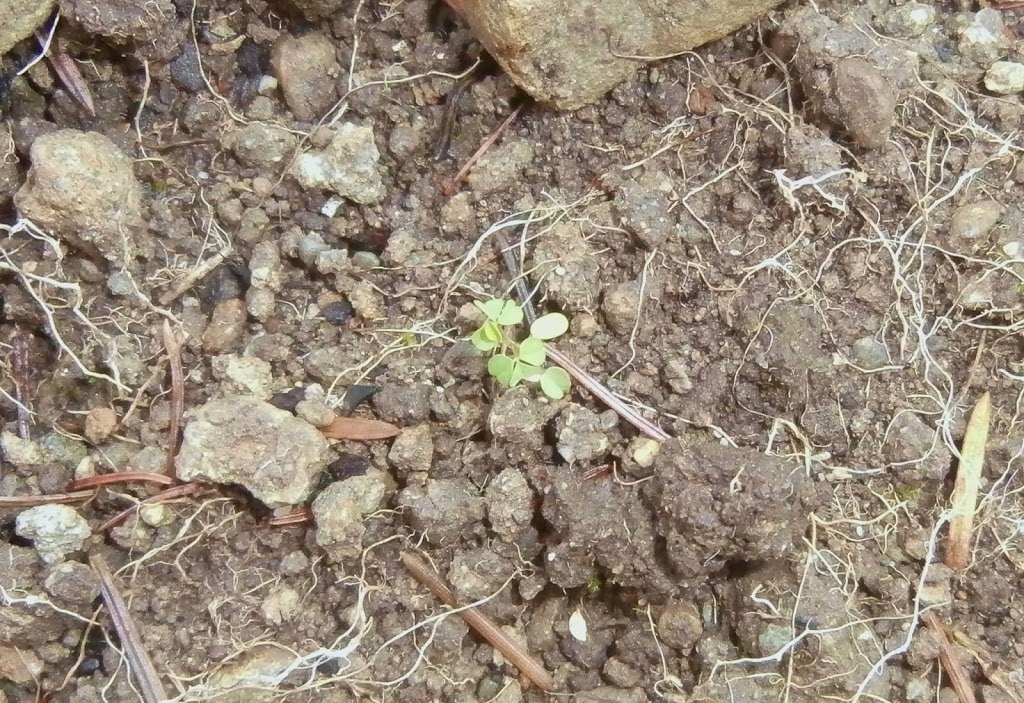 |
| This is the first oca volunteer that I spotted. |
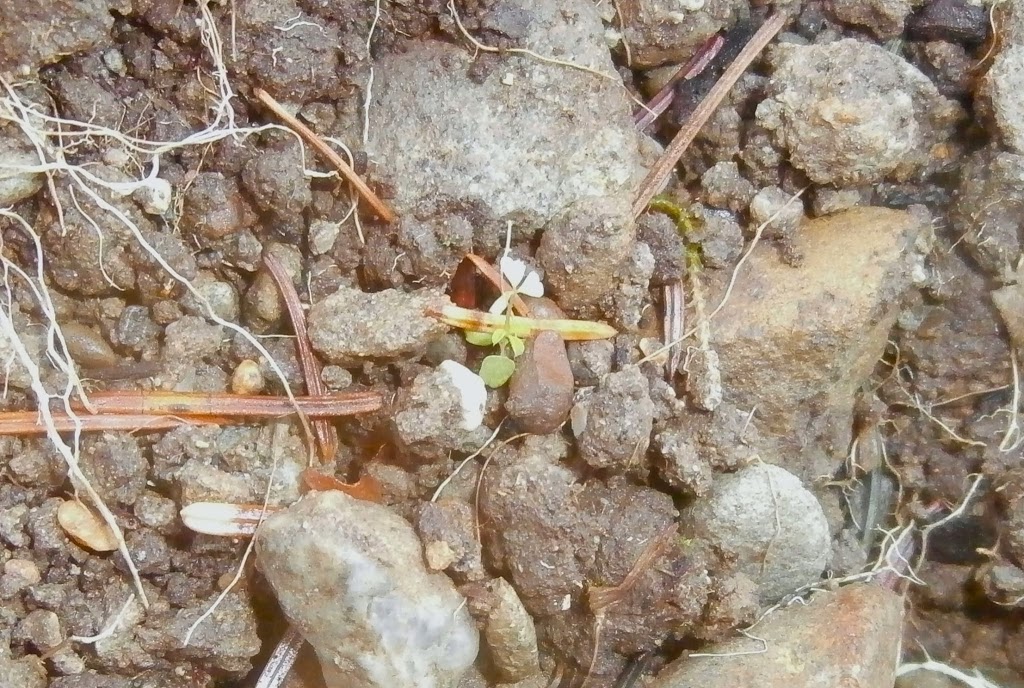 |
| Once I started looking, it wasn’t hard to find others. |
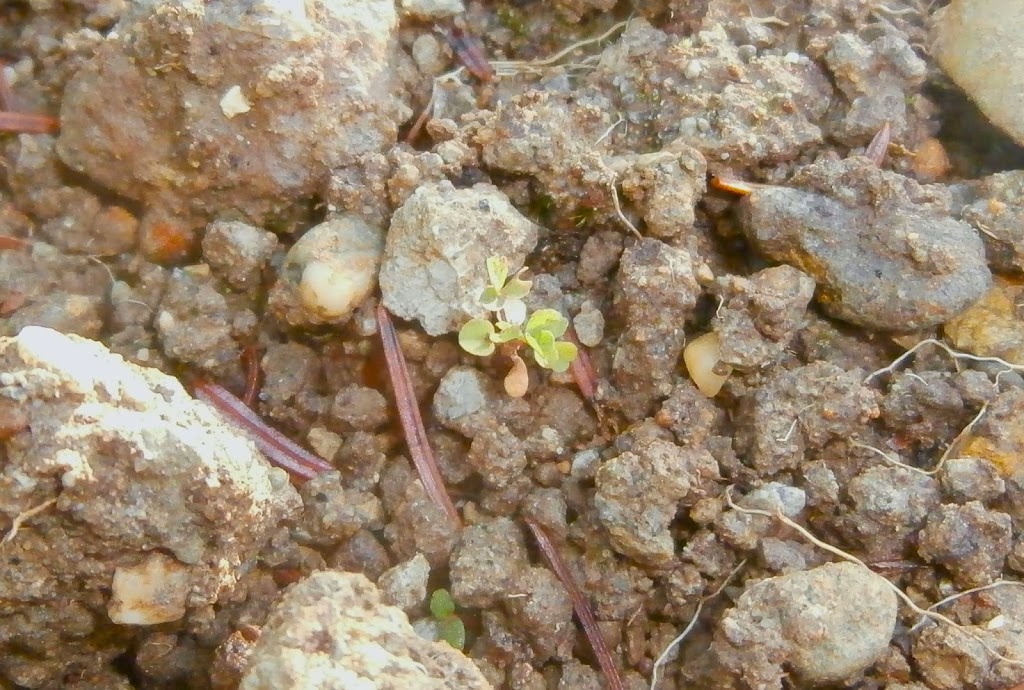 |
| There are two coming up in this picture. They like the rough and rocky soil. |
So, I guess all the painstaking seed collection might not have been necessary. It looks like oca will readily seed itself here. Nature has once again proved my efforts to be redundant. Have I introduced a new noxious weed here? I can’t imagine anything better than oca fighting for space with the gorse, Scotch broom, and Himalayan blackberry.
A new oca
The fastest growing of our oca plants that were started from seed this year has grown into a large, healthy plant and is now making tubers. I spotted one poking out of the soil and pulled it:
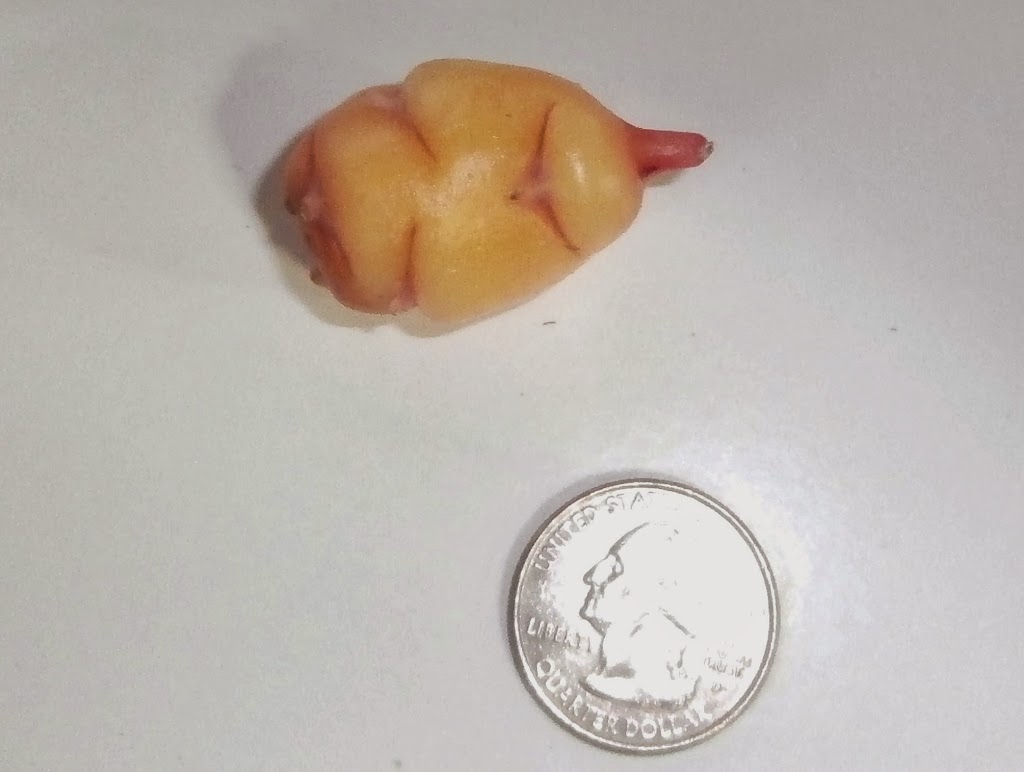 |
| A new oca variety from seed |
This variety will get a chance to grow from tubers next year and, if it performs well, could be the first new named cultivar produced from seed in North America. The rapid growth of this plant, which was sown in August, certainly gives cause for some optimism.
Oca seeds and tubers are sometimes available in our seed shop.

I am attempting to grow oca in Florida during the hot summer. I notice the specimens in the shade are doing better than the ones in the sun. I had to transplant a few and water them in, i notice that they get stem rot like crazy here, this disease had killed many of my plants. If I dont water the plants enough, they will dry up, and if i water them too much, they will rot. The line is extremely fine here. I hope to get some success this fall with them. If they do not work out, I will stop growing them. All my Oca plants are sparse in their growth.